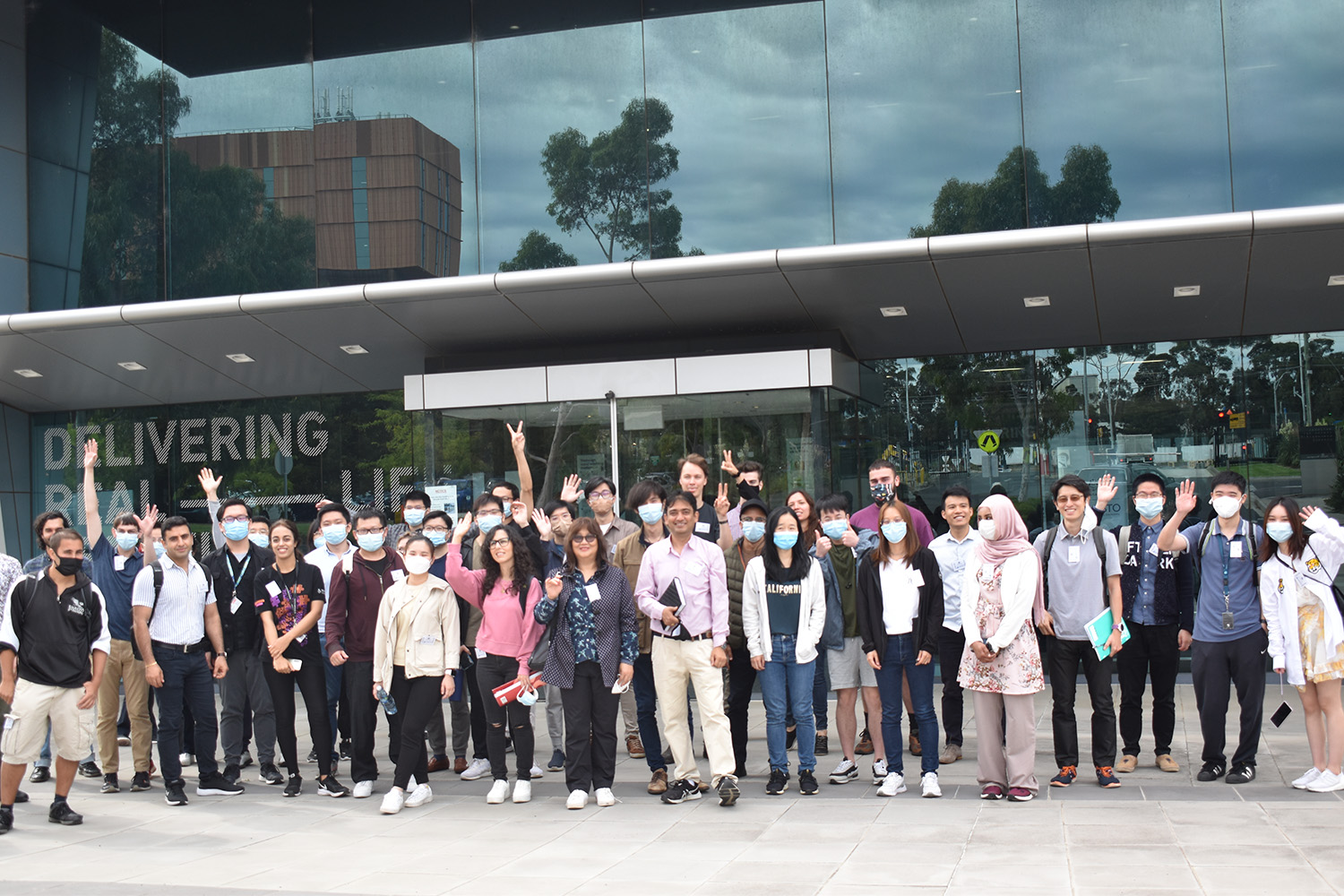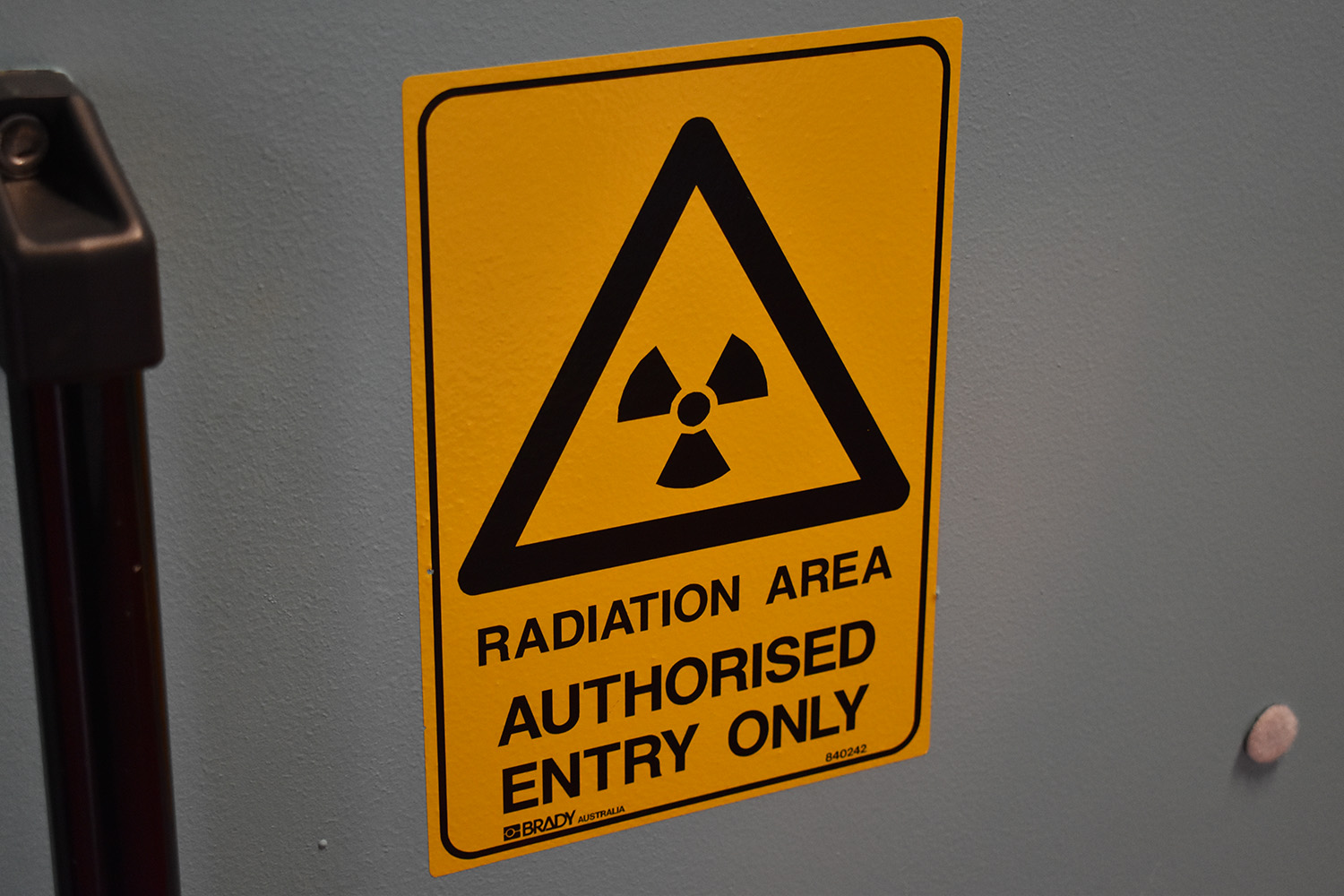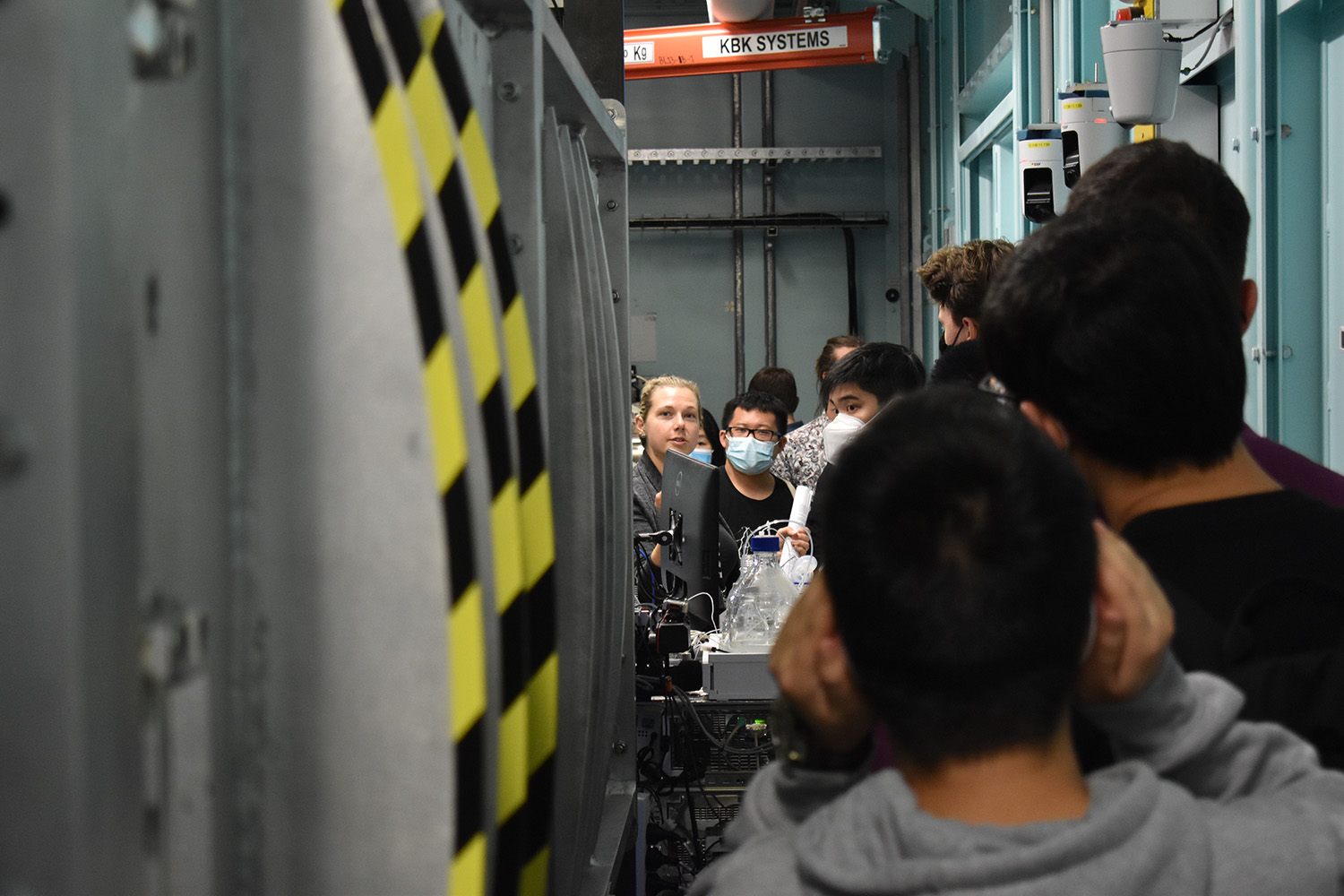Development
Stories
Join us on journeys to Germany, the United Kingdom, Sweden and back home in Australia to hear about the adventures enabled by membership of Exciton Science.
With the borders back open, students and researchers were able to attend international conferences, visit partner laboratories and catch up with old friends for the first time since 2019.
We’re stronger together: Forming new bonds at graphene gathering
Every member of the global research community has been adversely impacted by the COVID-19 pandemic. But for Australian scientists, already geographically removed from their colleagues elsewhere in the world, the enforced isolation has been even more keenly felt.
Thankfully, conditions in 2022 have enabled Exciton Science representatives to travel widely and relatively freely for the first time in three years. Eliza Rokhsat, a third-year PhD student based at the University of Melbourne, was among the Centre members to begin reconnecting, travelling to the Graphene 2022 conference in Aachen, Germany.
For Eliza, who is studying the synthesis and characterization of 2D materials for electronic devices, it was an important, albeit daunting, opportunity to gain knowledge and inspiration from some of the leading members of her field.
“At first it was a bit scary, but they were very kind and very welcoming in the conference,” she said.
“Also, they were excited because no one else was from Australia. They were like, ‘all the way from Australia here, that's very exciting.’ They were also super keen to hear about what we are doing here.”
Eliza was particularly impressed by the plenary talk of Camilla Coletti, a member of the Istituto Italiano di Tecnologia in Italy.
“She is working on graphene and graphene based devices,” Eliza said.
“I was really impressed by how confident and powerful she was in explaining what she's doing in her group.
“I also heard from another scientist from Spain, Marianna Sledzinska of the Catalan Institute of Nanoscience and Nanotechnology, and she was talking about thermal connectivity of 2D materials and her recent works on MoS2/hBN heterostructure.
“She was also very good and I spoke with them both. There were a lot of women scientists there actually, working on electrical properties and thermal properties of 2D materials. It was very impressive. I was really inspired by these women.”
In addition to the conference, Eliza was able to spend time at RWTH Aachen University, where she worked in the AMO Central Lab for Micro- and Nanotechnology, alongside members of Dr Alwin Daus’s group.
“Their lab is a miniature factory for electronic devices,” she said.
“I did one experiment with them, synthesizing of heterostructures of 2D material. I saw how they get a sandwich of different layers on top of each other for their transistor devices.”
Eliza is now aiming to use the knowledge she gained to replicate similar techniques back in Melbourne, and hopes for productive collaborations between Exciton Science and her new friends in AMO centre in Germany.
“What we hope to do is to directly deposit different 2D materials and make heterostructures with them,” she said.
“So it was really important to develop high quality 2D materials for the future of solar cells, transistors and memory devices.
Eliza also visited University of Bayreuth and the groups of Prof Georg Papastavrou and Dr. Markus Retsch, and even ran into a familiar face in the form of Exciton Science alumni Dr Heyou Zhang.
“It was super amazing to get to see the thermography setup and how they measure thermal diffusivity of carbon fibres in Retsch’s lab,” she said.

Eliza Rokhsat

Dr Heyou Zhang
There were a lot of women scientists there actually, working on electrical properties and thermal properties of 2D materials. It was very impressive. I was really inspired by these women.”
Diamonds are for everywhere: PR blitz boosts new quantum theory
Channelling Hollywood’s approach to blockbuster build-up, Exciton Science Research Fellow Dr Harini Hapuarachchi embarked on a publicity tour to promote RMIT University’s smash hit of theoretical work in 2022.
Together with Professor Jared Cole and Dr Francesco Campaioli, Harini spearheaded work to develop the first general theoretical model that explains the interaction between a nitrogen-vacancy (NV) centre and plasmonic nanoparticles in diamond.
This could open a pathway to enhanced sensitivity and greater efficiency across a range of emerging quantum technologies.
But for the theory to make an impact, diamond experimentalists working on the NV centre need to be in the know.
nd to achieve that goal, Harini set off for Europe in September 2022.
Her tour included giving talks at the Institute for Quantum Optics at the University of Ulm, the Center for Applied Quantum Technology (ZAQuant), University of Stuttgart, and the Fraunhofer Institute for Applied Solid State Physics (IAF), Freiburg
“I had the opportunity of going and presenting at several leading diamond research laboratories around the world, thanks to Exciton Science, Jared, and the heads of those labs,” she said.
“I went to Germany. Two of the largest diamond research groups, and the most pioneering [are there].
Harini also called in on the Fraunhofer Institute for Mechanics of Materials IWM in Freiburg, followed by a talk at the Atomic, Mesoscopic and Optical Physics Group at the University of Cambridge.
“[Exciton Science student] Alison [Goldingay] was there, I met her, and gave a talk there as well,” she said of her trip to the UK.
“I’d like to thank Alison in particular, who went out of her way to arrange the visit and for introducing me to the relevant groups there.
“And I also gave a talk at the University of Melbourne to Dr Liam [Hall]’s group.”
Groups run by Professor Fedor Jelezko (Ulm), Prof. Jörg Wrachtrup (Stuttgart), Dr Jan Jeske (Freiburg) and Dr. Reyhaneh Ghassemizadeh (Freiburg), as well as Prof. Helena Knowles and Dr. Hannah Stern (Cambridge), Dr Philipp Reineck (RMIT), and Dr. Liam Hall (Melbourne) are among the distinguished researchers who could be set to benefit from the new theory and its insights.
“This theoretical field is just starting off,” Harini said.
“There has been experimental work done on the interaction of these two types of particles here and there, but no one has really looked much into putting these two types of particles together in a theoretical sense. There's lots of potential to explore.
“I had lots of illuminating discussions that paved multiple pathways for collaborations with these laboratories. I’m looking forward to those exciting projects ahead.”
Following her visit to Europe in September, the work by Harini and her collaborators was published in the journal Nanophotonics a month later.
Now, she is already looking forward to expanding the work, and her promotional trip is already paying dividends in the form of a distinguished new collaborator.

Harini Hapuarachchi (left) with her colleagues at Cambridge University
I have already started preliminary analyses for extensions of this model in collaboration with Jared, Francesco, and Prof. Fedor Jelezko, who is a world-renowned pioneer in NV research.
Dr Harini Hapuarachchi
Australian Synchrotron Tour
Exciton Science continued its close association with the Australian Nuclear Science and Technology Organisation (ANSTO), as members were provided with an extensive tour of the Australian Synchrotron in Clayton, Victoria.
The visit to the National Centre for Synchrotron Science (NCSS) involved gaining familiarity with the Linac, Booster and Storage Ring Tunnels at the heart of the particle accelerator infrastructure.
Introductory talks and capability explanations focusing on small-angle X-ray scattering (SAXS) and X-ray absorption spectroscopy (XAS) were delivered by beamline scientists Susi Seibt and Valerie Mitchell, as well as a discussion about how to apply and prepare for beamtime.
This was followed by a further tour of the Synchrotron beamlines. The visitors gained a broad overview of ongoing activities and enjoyed a glimpse of the newly built beamlines as part of Project Bright. In addition to Valerie and Susi, scientists from other beamlines were also available to discuss specific techniques.
The visit afforded Centre members the information they require to successfully apply for beamtime and be ready to take advantage of the time they are allocated using this world-class equipment.



